Introduction
Have you ever heard people complaining about “Disphan hands”, a condition usually marked by dry, red, and scaly skin in the hands mostly resulting due to long contact with water, or dipping hands too often in kitchen sink, or repeated exposure to, sensitivity to, or overuse of cleaning materials (such as detergents). When you come across this term, that is nothing but Hand Eczema and also called as hand dermatitis.
20 to 35% of all dermatitis affects hands and in general 2 to 10 % of the population develops Hand Eczema in some or other stages of their life time.
More than 30 million people in the U.S. have some form of eczema. Eczema can effect any part of the body but it is more trouble some if it appears in hand and foot as these are the constantly used body part.
Causes



It is the Most common occupational skin disease, comprising 9% to 35% of all occupational disease.
In many cases, hand dermatitis occurs due to direct damage of the skin by harsh chemicals or irritants, especially soap, detergent and constant contact with water. This is called irritant contact dermatitis.
Skin contact with allergens such as perfumes, rubber or leather can also cause dermatitis in people with an allergy to these substances. This is called allergic contact dermatitis.
In many cases, however, the cause of hand dermatitis is unknown, and there is no trigger. It is also common for someone to have more than one cause of their hand dermatitis, for example a combination of in-built and irritant contact dermatitis.
Hand Dermatitis likely affects the people who have had eczema in childhood and are in constant contact with water in their daily routine.
Symptoms and How Hand Eczema appears?



Hand Eczema has a huge impact on people’s lives when it’s severe or even in mild cases. Like other forms of dermatitis, the affected areas of skin feel hot, sore, rough, scaly and itchy. There may be itchy little bubbles or painful cracks. The skin may also appear like following
- Dry, chapped skin (often the first sign)
- Patches of red (or dark brown) irritated skin
- Scaly and inflamed skin that may itch
- Burning sensation
- Itchy blisters
- Deep, painful cracks
- Bleeding or weeping skin
- Crusts, pus, and pain
Eczema Management
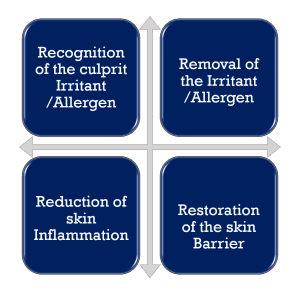


The rule of the 4 R’s can be applied in the management of hand eczema.
The Key in managing Eczema is finding the cause, the triggers and Allergens once you figure out them it becomes a lot easy to manage your Eczema just avoiding them solves major part of the disease. Finding the cause often takes time, and lot of efforts but finding the cause is essential to get relief. Once you know what’s causing the hand eczema, appropriate treatment can bring relief. Treatment includes avoid what’s causing the hand eczema.
Here, a few smart strategies that may help keep hand eczema at bay.
House hold tips to Manage Hand Eczema
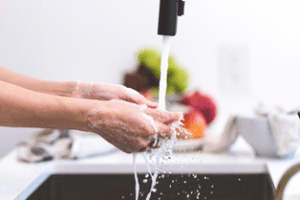

 Reduce Washing Hands
Reduce Washing Hands
Avoid washing your hand too often, wash it only when they’re dirty or have germs, like after you use the bathroom. Each time you wash up, you rinse away some of the nourishing oils that your skin makes.
Handling Food


Avoid handling raw food items (raw vegetables, especially onion and garlic, raw meat, and fish) with bare hands. Use a protective gloves Instead while handling such foods.
Handling Solvents


Direct contact with solvents, polishes (metal, shoe, furniture, car, etc.), adhesives, and epoxy resins has to be avoided. Use protective gloves. Vinyl gloves can be used for these jobs. Do not use latex gloves since solvents pass through latex rubber gloves. Vinyl gloves are less likely to cause allergic reactions.
House hold Work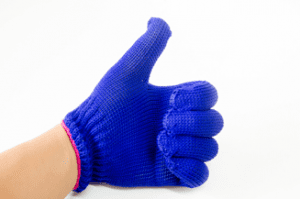


Use cotton-lined gloves for protection while doing household course or using cleansers and chemicals. Latex gloves can cause allergic reactions, so it’s best to avoid them. Don’t wear waterproof gloves for too long, though. They can make your hands sweat and lead to an itchy eczema flare-up.
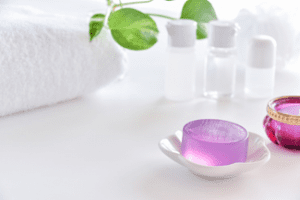

 Avoid Soap
Avoid Soap
Use lukewarm water and mild cleansers without perfume, colors, anti-bacterial agents for washing hands. Take off rings before washing. Pat hands dry, especially the finger-webs and wrist.
Ointments and Creams


Use corticosteroid ointments and emollient creams as advised. Do not use any other hand creams. Repeat application of emollients (Vaseline) as many times as possible. Thin polyethylene gloves at night after applying corticosteroid ointment will provide occlusion and enhance the effect of ointment.
Cold Weather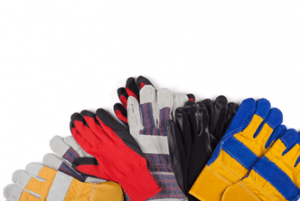


Protect hands from cold weather and prevent damage to your hands from the whether. Use leather gloves; thin cotton gloves may be first worn.
Educate people


As a preventive measures High risk groups such as those with history of atopic dermatitis, hairdressers, health-care workers, food-handlers, and those working with solvents and cutting oils should be identified and educated.
With preventive measures and treatment, however, most people with hand dermatitis recover completely.
When to see a dermatologist



If you have extremely dry, painful hands and using moisturizer throughout the day fails to bring relief, you may have hand eczema. Without treatment and preventive measures, hand eczema tends to worsen.
It’s also a good idea to see a dermatologist, because he may suggest stronger topical or other treatments to treat underlying inflammation, depending on your symptoms.
Get your Eczema Score using our Eczema Score checker and see what impact it has in your life by getting DLQI score.
GET IN CONTROL OF YOUR ECZEMA
Use our AI tool to check the severity of Eczema and keep track of your Eczema progress.

